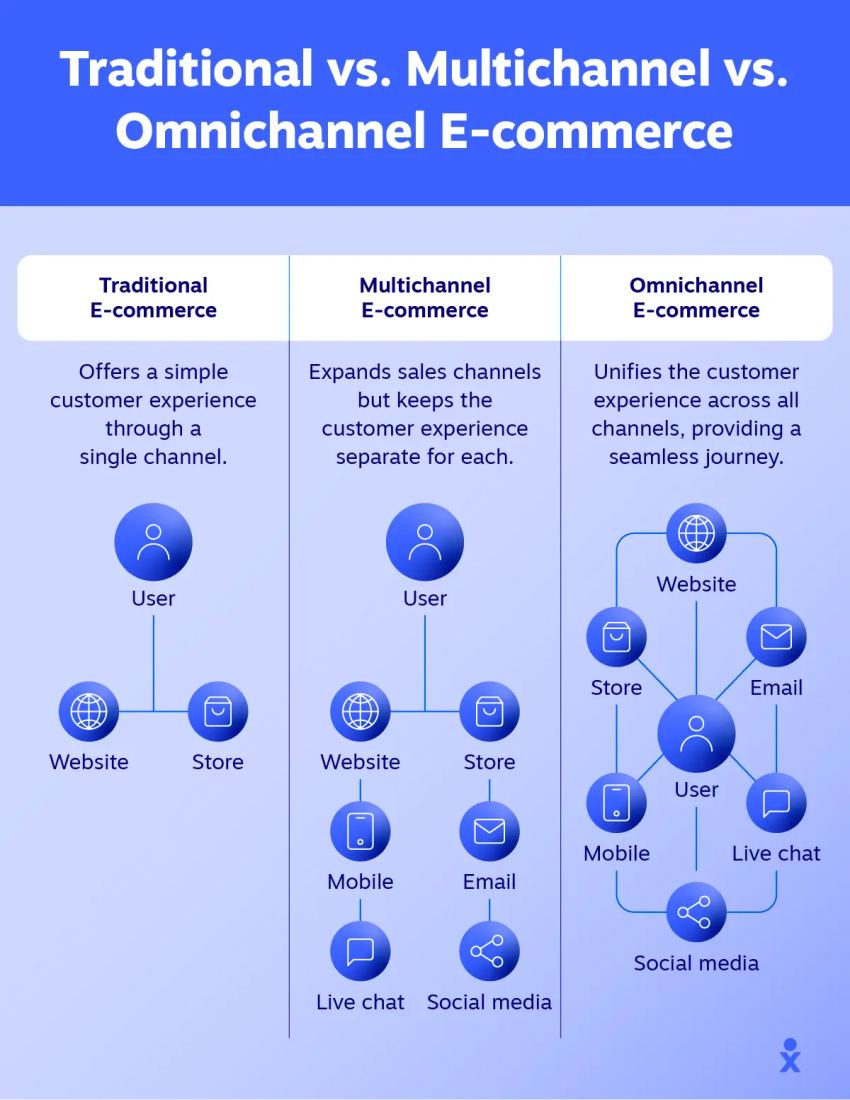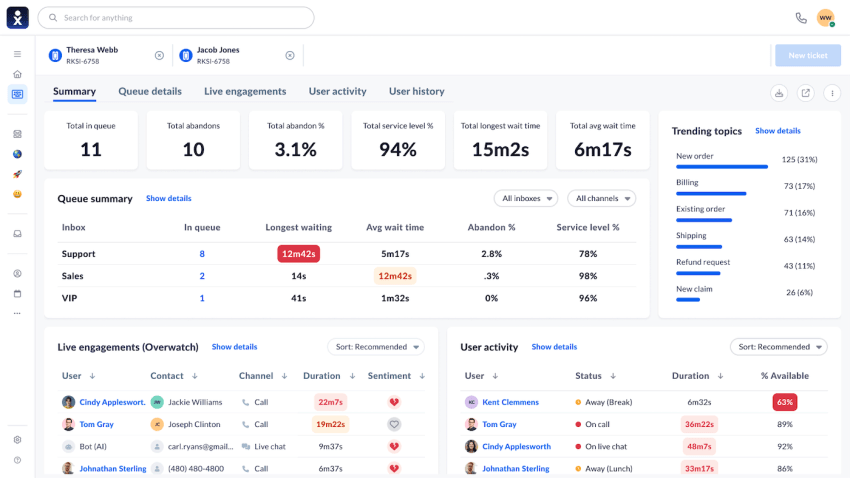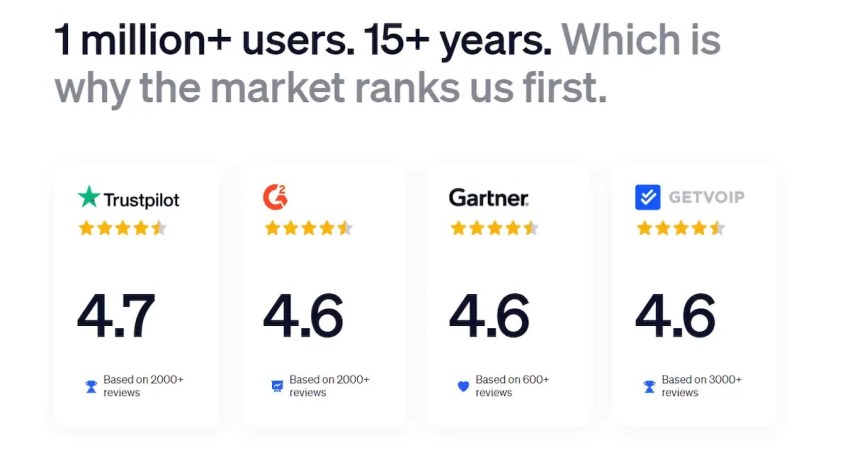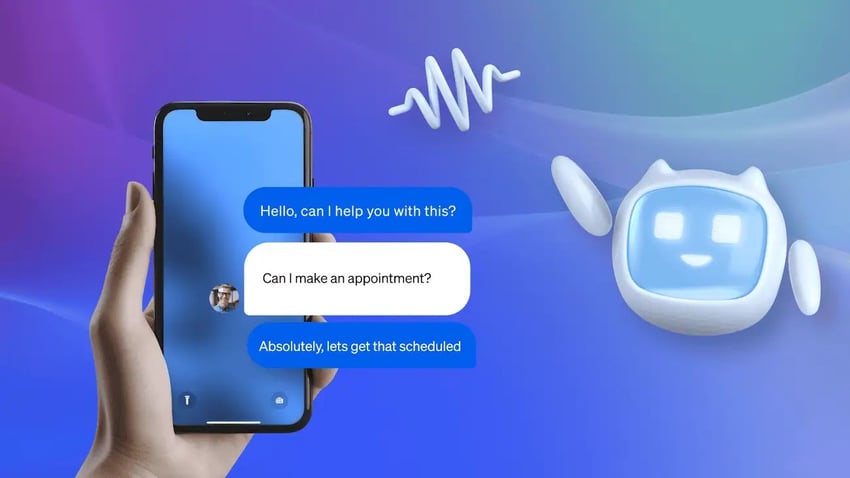Customer expectations are higher than ever, and they’re not slowing down. When customers call in, they expect a prompt response from knowledgeable live agents who can genuinely assist them.
However, here’s the challenge: Most businesses still operate with disconnected tools and siloed teams, making it difficult for call center agents to deliver a consistent experience.
That’s where a unified customer experience comes in.
When your call center unifies communication channels, customer data, and team workflows, you don’t just solve problems faster; you also enhance the overall customer experience. As a result, you earn higher loyalty, drive retention, and create memorable interactions at scale, all of which reflect today’s best practices in customer service call centers.
We’ll break down how to create a unified customer experience (CX) strategy in your contact center, including the tools, workflows, and team alignment that bring it all together.
What Is Unified Customer Experience in a Call Center?
Unified CX refers to delivering a consistent, connected experience across all communication channels, voice, email, chat, social media, and more. It means customers receive the same high-quality service, no matter how or where they contact you.
Defining unified CX in customer interactions
Unlike omnichannel strategies that merely offer multiple ways to connect, a unified customer experience enables those channels to work together as one. For example, if a customer initiates a support ticket via chat and follows up by phone, the conversation should continue without needing to repeat any information.

Customer experience management (CXM) tools enable this. They track and personalize each step of the customer journey, whether someone is using a mobile app, shopping online, or visiting a store, ensuring a seamless and connected experience.
Brands like Apple and Amazon excel in this area. Apple lets you book support online, in-store, or through the app, and your product history is accessible from anywhere. Amazon’s support seamlessly transitions from chatbot to phone, maintaining the full context and making help feel easy and personal.
Call center CX stats
Want proof that customer experience is a business driver? These quick stats show why CX and call center operations matter more than ever:
- 96% of customers say that customer service is essential in their decision to be loyal to a brand. (Microsoft, 2020)
- 75% of customers expect consistent service across multiple channels. (Salesforce, 2022)
- 86% of buyers are willing to pay more for a better experience. (PwC, 2018)
- Only 26% of companies say their contact center systems are fully integrated. (CCW Digital, 2023)
Why Unified CX Matters for Customer Satisfaction and Loyalty
A disconnected support journey leads to frustration, repeated explanations, and missed expectations. Unified CX solves this by connecting every touchpoint and workflow around what the customer needs.
When service feels smooth, proactive, and personal, people are more likely to stay loyal. It also improves key metrics, such as satisfaction scores, resolution times, and overall customer sentiment.
Unified CX helps you:
- Keep customers by solving problems quickly.
- Meet expectations with consistent, reliable service.
- Build loyalty through thoughtful, connected experiences.
- Strengthen relationships by being responsive at every step.

And the payoff goes beyond metrics; customers are also willing to spend more. Research shows that 42% would be willing to pay more for a friendly and welcoming experience, and 43% would be willing to pay more for greater convenience. That’s why unified CX isn’t just good service, it’s good business.
Streamlining CX Across Communication Channels
Most contact centers rely on a web of disconnected tools. These silos block visibility, increase inefficiencies, and cause customers to repeat information.
Breaking down silos and aligning touchpoints
The average CX team uses more than six platforms to manage communication. Without a unified system, team members lose track of the customer journey. That disjointed experience hurts customer loyalty and makes internal coordination harder.
To solve this, companies must unify their systems and customer information. Dashboards that integrate routing, automation, and customer data enable support teams to see the whole picture and act in real-time.
Consider your own experience with a fragmented support system, calling a cable provider only to repeat yourself to multiple agents. Contrast that with Spotify, where any support rep has immediate access to your account details and previous chats, making resolution much smoother.
Empowering agents with CRM, chatbots, and knowledge bases
Contact center agents need the right tools to deliver an exceptional customer experience. That includes:
- A smart CRM that keeps track of customer info and past interactions.
- Chatbots that handle simple questions or prep info for agents.
- A go-to resource so agents can find clear, consistent answers fast
These tools make teams more efficient and confident. Think of an airline rep who sees your past travel issues through a connected CRM; they help you faster, and you trust the brand more.
When powered by a CDP, agents gain a comprehensive view of the customer. It brings together data from e-commerce, chats, stores, and apps, enabling teams to deliver more thoughtful and personalized service.

Operational Foundations of a Unified Experience
Creating a consistent experience starts with workflows, team culture, and process clarity.
Workflows built around customer preferences
Every interaction should reflect the way customers want to be helped. Utilize automation to support self-service and resolve issues in real-time.
Map workflows to:
- Known pain points include repeat order issues or failed logins.
- Decision-making moments, such as renewals or upgrades.
- Channel preferences were that some customers prefer chat, while others prefer phone.

McKinsey data shows that live phone support remains valued across all generations, including Gen Z. Meanwhile, chat and email have become widely accepted. This illustrates why workflows should adapt to each customer’s preferred method of connection.
Take Zappos as an example. Their support adapts to the channel you choose. Call or email, agents can instantly see your order history and resolve issues without extra steps. A customer-first workflow like this keeps the experience smooth and satisfying.
Aligning teams around customer-centric values
Customer-centric organizations prioritize alignment across departments. CX doesn’t live in just one team; it spans customer support, marketing, onboarding, and customer success.
Use shared dashboards to connect marketing campaigns to service performance. For example, when a campaign drives new signups, onboarding and support teams should be prepared with context, FAQs, and proactive messaging.
Hold regular cross-functional meetings where team members review:
- Recent customer feedback
- Insights from chatbots and CRM
- Workflow performance metrics
When every team contributes to a unified experience, customers feel valued and understood. This strengthens the entire customer relationship.

Key Technology That Powers Unified CX
Technology is the backbone of every strong CX strategy. The right tools let you unify, automate, and scale your efforts.
Using a customer data platform to unify profiles
A CDP combines customer data from various channels into a single, unified profile. This includes data from:
- E-commerce transactions
- Chatbot interactions
- Social media feedback
- Mobile app activity
- In-store behavior
Brands like Starbucks use CDPs to link app activity, purchase history, and loyalty rewards across all channels. Customers can order on their phone, earn points in-store, and update preferences online, all in one system.

This unified view matters even more today: 73% of customers expect better personalization as technology improves, and 74% expect it when they share more data. A CDP enables agents to meet those expectations by providing timely, personalized assistance, like recommending a product upgrade based on past purchases or following up after a service issue.
Centralizing communication with CCaaS platforms
Contact center as a service (CCaaS) solutions bring together voice, chat, email, and messaging into a unified dashboard. That means fewer tool switches, improved visibility, and faster resolution times.
CCaaS helps unify workflows, streamline routing, and track functionality across all support operations. It also improves real-time engagement and simplifies performance monitoring. With CCaaS, brands gain scalability and the agility to adapt to customer needs across different channels.

How Unified CX Drives Measurable Business Outcomes
Unified CX isn’t just good for customers, it’s a competitive advantage.
Loyalty comes from an exceptional customer experience
Loyal customers are the result of meaningful, consistent experiences. By unifying communication channels, agents deliver more effective and personal support. Customers are more likely to return and recommend your brand.
Exceptional customer experience builds long-term value:
- Better customer retention
- Increased lifetime value
- More referrals and positive reviews
Netflix is a great example. When a customer contacts support, the agent has access to their watch history, billing status, and device info. That context creates faster resolutions and higher satisfaction.

Measuring impact with the right metrics
To improve customer experience (CX), you need to measure it. Use dashboards and KPIs to track:
- Customer satisfaction (CSAT)
- First response and resolution times
- Customer engagement across platforms
- Adoption of self-service features
Regularly review these metrics to uncover areas for improvement. For example, if live chat has low satisfaction scores, refine the chatbot script or add routing rules for faster escalation.
Best Practices for Sustaining a Unified CX Strategy
The best customer experience strategies are built to evolve. Unified CX requires long-term focus and continuous collaboration.
Keeping teams in sync
CX success depends on shared goals between customer support, success, and marketing. Use CXM tools to monitor cross-functional workflows, identify roadblocks, and refine processes.
Foster collaboration through:
- Joint planning sessions tied to product launches or campaigns
- Shared access to CX dashboards and customer data
- Aligned onboarding and retention strategies to prevent drop-offs
Team alignment ensures your customer experience strategy remains both flexible and consistent.
Balancing self-service with a human touch
Self-service options provide customers with speed and convenience, while agents offer empathy and more in-depth support.

Create a seamless blend by:
- Building a smart, searchable knowledge base with articles for common issues
- Training chatbots to answer top FAQs, such as return policies or shipping timelines
- Using automation to surface helpful content before escalation
Think about your experience with Shopify or Canva. Their self-service portals are so intuitive that most users never require live support; however, when they do, the transition is smooth and respectful of your time.
Nextiva’s Unified Customer Experience Solution
Delivering a unified customer experience in your call center isn’t just a trend — it’s a business necessity. By integrating customer data, unifying communication channels, and streamlining workflows, contact centers can create consistent experiences across every touchpoint and build long-term loyalty. And, as customer expectations continue to rise, call centers that invest in unified CX will stand out and gain that competitive edge.
Nextiva’s unified customer experience platform brings together your communication channels, customer data, and team collaboration tools — all in one place.
Ready to unify your customer experience and give your agents the tools they need to succeed? Schedule a demo with Nextiva and see how an all-in-one platform can help you deliver faster resolutions, happier customers, and stronger business results. 👇
Create an amazing customer experience.
Say goodbye to siloed conversations and hello to a unified experience. Seamlessly engage on every channel with Nextiva’s platform for the best CX.
Unified customer experience FAQs
You’ll need a CRM to track customer interactions, a CDP to consolidate data from all channels, and a CCaaS platform to centralize support, such as chat and voice. When these tools work together, agents get a full view of each customer and can deliver faster, more consistent service.
Self-service tools, such as chatbots and help centers, enable customers to resolve simple issues independently, saving time and enhancing satisfaction. It also lightens the load on agents, allowing them to focus on more complex support.
Customer data helps personalize support. With a CDP, agents gain a comprehensive view, from purchase history to behavior, enabling them to respond with greater context and care. Without it, the service feels disconnected and generic.
Yes. People remember how smooth or frustrating your support feels. A unified experience builds trust because customers don’t have to repeat themselves or switch between disconnected channels.
Silos slow things down and lead to inconsistent service. When teams and systems fail to share information, customers often end up repeating themselves, being transferred from one person to another, or waiting longer than necessary. It creates a disjointed experience that frustrates both customers and support teams.

















 Customer Experience
Customer Experience 











